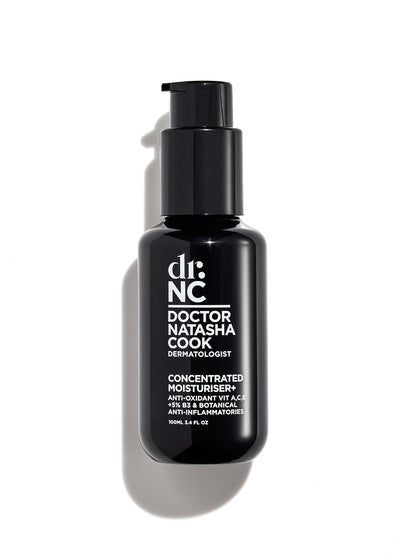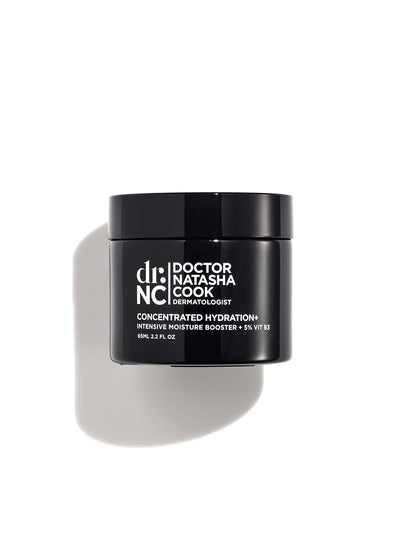
This article was originally published on SPA+CLINIC.
As a practising board-certified Dermatologist, you could say I’ve seen it all when it comes to acne and the biggest mistakes both patients and practitioners make when treating acne-prone skin. We live in a world driven by industry who often sell people what they think they need based on societal beliefs to make a quick buck rather than re-educate, which is expensive and less profitable. This results in a ton of bad habits and mistakes when it comes to dealing with breakouts and acne-prone skin.
So, let’s break these down.
#1 Choosing the wrong cleanser and cleansing TOO often
Hands down one of the biggest mistakes my patient population make is not only choosing the wrong cleanser BUT to cleanse too often.
Fed by old-school beliefs and a pharma industry that would rather sell you what you think you need rather than actually educate you, people are still predominantly stuck in the pattern of stripping their acne-prone skin of dirt and its oils with foaming and scrub-based cleansers.
The way the skin is cleansed is easily one underestimated step when it comes to your skin routine, especially for acne and breakout-prone skin.
Foaming cleansers contain surfactants and soap-like substances that strip the skin bare of its oils and also damage the barrier layer (which needs oil-based substances to keep it fortified and a stable protective layer).
Using cleansers of this nature creates several biological issues that then contribute to the development of more congestion, more breakouts and more acne.
Firstly, taking oil out actually triggers the skin to make more oil! A physiological principle known as biofeedback.
Stripping the skin dry sends a message to the skin’s sebaceous glands to overcompensate for the oils removed and in fact produces MORE oil. It does this in a very reactive and haphazard manner, only creating more instability and more breakouts. Yep, the more we wash our skin the more oil we make it and the worse our breakouts become.
The second physiological blunder that is triggered by over-cleansing the skin is the inactivation of our natural cell exfoliation enzymes. The enzymes that allow our skin cells to turn over every 20 – 30 days and exfoliate need a MOIST environment to work efficiently. Over-cleansing removes the good natural moisturising factors that these enzymes require for effective and efficient follicular cell turnover. Leading to even more blackheads, whiteheads and ultimately breakouts.
The third issue foaming cleansers create that harms acne-prone skin, is damaging the epidermal barrier function. We need our ceramides, essential fatty acids and natural cholesterol for a stable intact stratum corneum and barrier.
A damaged barrier causes more sensitivity, inflammation, and instability in acne-prone skin.
#2 Not Using Moisturiser
I’m still in disbelief that many of my colleagues (usually the male baby boomer generation) still tell their acne patients NOT to wear moisturiser! Drying out skin makes acne worse.
Due to the clever biofeedback mechanisms in the skin (as mentioned above), we now know that applying moisturiser (a non-comedogenic one that also preferably has nice sebum regulating and anti-inflammatory ingredients like niacinamide) helps acne-prone skin and can prevent future breakouts. The right moisturiser will benefit acne in several ways.
Firstly, it provides moisture that is required for the skin’s natural cell exfoliating enzymes to work and therefore prevent and reduce the development of future comedowns and ultimately breakouts.
Secondly, hydrated skin is essential for a healthy high functioning intact barrier layer. This will reduce inflammation and speed up wound healing of acne lesions.
Thirdly, choosing moisturisers that contain anti-inflammatory niacinamide will help down-regulate sebum production whilst upregulating the good ceramide moisturisers. Fortifying the barrier layer and reducing inflammation.
#3 Not addressing the Diet
Gone are the days when we thought diet was not implicated in stimulating breakouts and acne flare-ups. It all comes down to INSULIN!
Yep, stable insulin equals stable skin. Therefore, the best diets are low sugar, low carb. High in anti-inflammatory above-ground red and green vegetables, supported with good anti-inflammatory fats (olive oil, avocado, fish oil) and protein (fish, eggs, chicken, less meat).
The low sugar also includes fruit. Most fruit has little nutritional value as most fruit is mainly fructose, i.e. just more sugar. The only fruits I recommend to my acne-prone patients are berries in the form of blueberries, blackberries and raspberries, as these fruits have the added benefits of anti-oxidants and anti-inflammatory.
Make sure you educate about the dangers of soft drinks which are high in sugar and therefore will wreak havoc with insulin metabolism and ultimately the skin.
When it comes to alcohol the best choices are again the low-sugar low-carb variety like vodka, gin and tequila. Dry French Champagne is better than sweet Prosecco, as the really good French bottles have less sugar (quietly I am a fan Billecart Salmon and Perrier Jouet are regulars on my shopping list).
#4 Using too many products: the concept of the “Mecca face”
I recently had a delightful patient in their late teens come in with one of the worst inflammatory “cystic” like exacerbations of acne, stimulated largely by topical skin care alone.
They actually started work at a makeup store, falling for the seducing sales pitches and dabbling in the overuse of the skincare.
They labelled themselves as having a “Mecca face”. In fact, the coworkers started commenting “oh you’ve now got Mecca face”. Clearly, this was not an uncommon occurrence and was a term commonly used for the breakouts and bad skin achieved by working at this store.
A perfect example of poor education and overuse of too many skincare products and actives, creating the ultimate epidermal S#%T storm.
LESS IS MORE. I embrace this principle to every skincare routine, but especially for acne and breakout-prone skin.
No more than 3 steps PLEASE (plus SPF in the AM).
-
A gentle non-foaming non-stripping cleanser. No more than twice a day. The skin should feel clean but hydrated and soft, NOT tight or dry.
-
Use a serum or similar with AHA and BHA to reprogram the cell exfoliation and to prevent congestion. No congestion = no breakouts. Yep, acne and breakouts are largely a condition of prevention. That is why you also must use it on the WHOLE face, not just to spots (another big mistake I see).
These ingredients will also assist in removing superficial congestion. BHA double up as an anti-inflammatory, so it helps to settle inflammatory acne papules. I DON’T recommend cleansers that have these fantastic ingredients in them. They need to be left on the skin so WHY would you wash them off?
- A soothing non comedogenic anti-inflammatory moisturiser, preferably with niacinamide in it. This will reduce sensitivity, calm the skin, strengthen the barrier function and prevent new congestion. The niacinamide will speed up the healing of inflammatory papules, fortify the barrier and aid in the regulation of sebum output.
- Prescription Vitamin A but only a few nights a week and AFTER moisturiser. My go-to is adapalene as it is extremely folliculotropic (it’s lipophilic so it goes deep into the follicle preventing congestion). Differin is adapalene only, Epiduo is adapalene plus benzoyl peroxide. I prescribe a pea size all over the face (yep you want to treat the entire canvas) Monday, Wednesday, and Friday nights. Apply AFTER moisturiser as it is 1lipophilic pre moisturising means better absorption, BUT also minimizes retinoid irritation.
- Weekly to fortnightly peels with combinations of salicylic acid and lactic acid.

#5 Ignoring underlying hormonal concerns
PCOS (polycystic ovarian syndrome), is an incredibly common syndrome often presenting with acne and breakouts. The syndrome is a combination of irregular periods (if your periods are regular then your hormones are most likely all ok), acne, scalp hair loss, increased body and facial hair (hirsutism) and/or ovarian cysts. Many PCOS patients have NO cysts on US so please don’t dive in to get a transvaginal US. The diagnosis is proven by hormonal blood tests showing an elevated LH: FSH ratio greater than 2.
Management of PCOS is essential to get the best outcome also for the skin long term.
Work with an Endocrinologist who specialises in PCOS. Diet as mentioned above is a big part of it as well as metformin in some cases and/or oral contraceptive pills.












